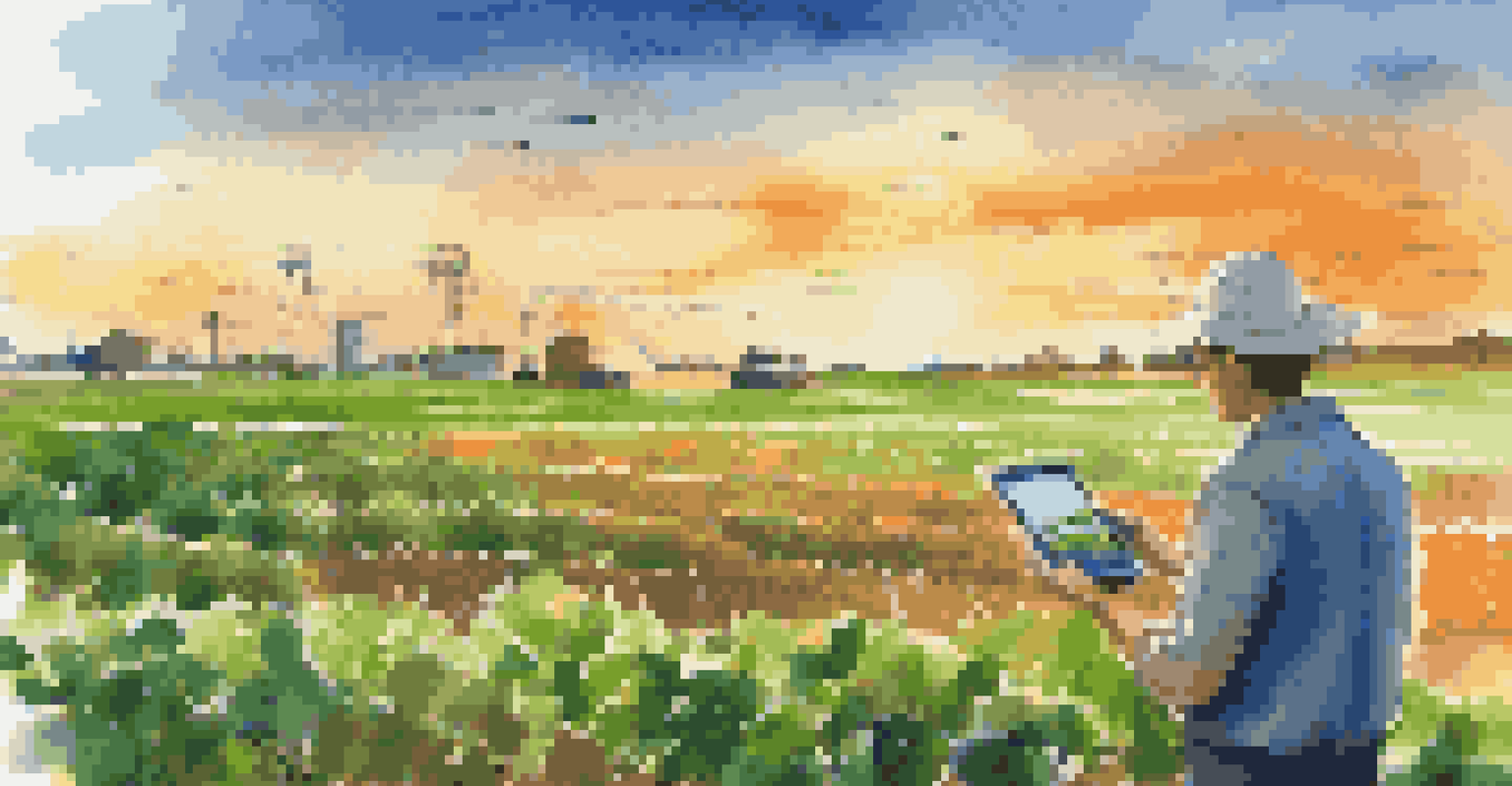Integrating IoT with Cloud Computing for Enhanced Capabilities

Understanding IoT and Cloud Computing Basics
The Internet of Things (IoT) refers to the network of physical devices connected to the internet, allowing them to collect and exchange data. Think of it as a vast web of everyday objects, like smart thermostats or fitness trackers, all communicating seamlessly. Cloud computing, on the other hand, enables these devices to store and process data remotely, rather than relying on local servers.
The future is already here — it's just not very evenly distributed.
By harnessing the power of cloud computing, IoT devices can access vast amounts of data storage and processing capabilities without the need for expensive hardware. This means that even small devices can perform complex tasks and analytics that were previously unimaginable. The synergy between these two technologies creates a powerful ecosystem that enhances functionality and efficiency.
For instance, a smart home system can collect data from various sensors and send it to the cloud for analysis. This allows homeowners to receive insights and control their devices from anywhere, creating a more connected and convenient living experience.
The Benefits of Integrating IoT with Cloud Solutions
Integrating IoT with cloud computing brings a host of benefits that can revolutionize both personal and business operations. One major advantage is scalability; as the number of connected devices grows, cloud services can easily expand to accommodate this increase. This flexibility allows organizations to add new devices and capabilities without significant infrastructure changes.

Moreover, cloud computing provides robust data security measures that are crucial for IoT devices, which often deal with sensitive information. With advanced encryption and security protocols, businesses can protect their data against potential breaches. This not only builds trust with customers but also ensures compliance with regulations.
IoT and Cloud: A Powerful Duo
The synergy of IoT and cloud computing enhances device functionality and efficiency by enabling real-time data processing and storage.
Another key benefit is the real-time data processing capabilities that cloud integration offers. For example, a manufacturing plant can monitor equipment in real-time and make immediate adjustments based on data received from IoT sensors, leading to enhanced operational efficiency and reduced downtime.
Real-World Applications of IoT and Cloud Integration
The integration of IoT and cloud computing has made significant strides across various industries. In agriculture, farmers use IoT sensors to monitor soil conditions and crop health, sending that data to the cloud for analysis. This allows them to make informed decisions about irrigation and fertilization, ultimately boosting yields.
The great thing about the Internet of Things is that it allows us to collect data from the real world in real time and make better decisions based on that data.
In healthcare, wearable devices track patient vitals and send the information to cloud platforms where it can be analyzed by medical professionals in real-time. This integration not only enhances patient monitoring but also enables remote consultations, making healthcare more accessible.
Additionally, smart cities leverage this combination to improve urban living. IoT sensors can gather data on traffic patterns and environmental conditions, which is processed in the cloud to optimize resources and improve city services, leading to a more sustainable future.
Challenges in IoT and Cloud Integration
While the benefits of integrating IoT with cloud computing are clear, several challenges need to be addressed. One significant hurdle is data privacy; as more devices collect personal information, ensuring that this data is protected becomes increasingly complex. Organizations must prioritize security measures to protect user data from potential cyber threats.
Another challenge is the interoperability of devices. With many manufacturers creating their IoT devices, ensuring that they can communicate with each other and the cloud can be a daunting task. Standardization efforts are underway, but until then, businesses may face difficulties in integrating disparate systems.
Real-World IoT Applications
Industries like agriculture and healthcare leverage IoT and cloud integration for improved decision-making and enhanced service delivery.
Lastly, the reliance on internet connectivity can pose issues, especially in areas with poor network coverage. If IoT devices cannot connect to the cloud, they lose their functionality, leading to potential operational disruptions. Businesses must consider backup solutions or local processing capabilities to mitigate these risks.
The Role of Edge Computing in IoT Integration
Edge computing is emerging as a complementary technology that enhances the integration of IoT and cloud computing. By processing data closer to where it is generated, edge computing reduces latency and bandwidth usage. This is particularly important for IoT applications that require real-time responses, such as autonomous vehicles or industrial automation.
For instance, in a smart factory setting, edge devices can analyze data on-site to make immediate decisions, while also sending relevant information to the cloud for long-term storage and analysis. This dual approach allows for quick reactions to changing conditions while still benefiting from the vast processing power of the cloud.
Furthermore, edge computing can help alleviate some of the security concerns associated with cloud computing. By processing sensitive data locally, organizations can minimize the amount of information transmitted over the internet, reducing the risk of data breaches and ensuring compliance with privacy regulations.
Future Trends in IoT and Cloud Computing Integration
As technology continues to evolve, the integration of IoT and cloud computing is expected to grow in sophistication. One trend to watch is the increased use of artificial intelligence (AI) and machine learning (ML) in analyzing the vast amounts of data generated by IoT devices. These technologies can provide deeper insights and predictive analytics, allowing businesses to make proactive decisions.
Another emerging trend is the rise of 5G networks, which will significantly enhance the capabilities of IoT devices. With faster speeds and lower latency, 5G will enable real-time data processing and communication, making IoT applications more efficient and reliable.
Challenges in Integration
Data privacy, device interoperability, and internet connectivity issues present significant challenges in the integration of IoT and cloud computing.
Additionally, sustainability will play a crucial role in the future integration of these technologies. As organizations seek to reduce their carbon footprint, IoT and cloud solutions can provide insights to optimize energy usage and resource allocation, contributing to a greener planet.
Getting Started with IoT and Cloud Integration
For businesses looking to integrate IoT with cloud computing, starting small is key. Begin by identifying specific pain points within your operations that could benefit from IoT solutions. Whether it's improving inventory management or enhancing customer experiences, focusing on targeted applications can lead to quick wins.
Next, it's crucial to choose the right cloud service provider that aligns with your business needs. Look for a provider that offers robust security features, scalability options, and seamless integration capabilities. This will ensure that your IoT devices can communicate effectively and securely with the cloud.

Finally, invest in training and resources for your team to maximize the benefits of this integration. Understanding how to leverage IoT data and cloud services will empower employees to make informed decisions, ultimately driving innovation and growth within your organization.